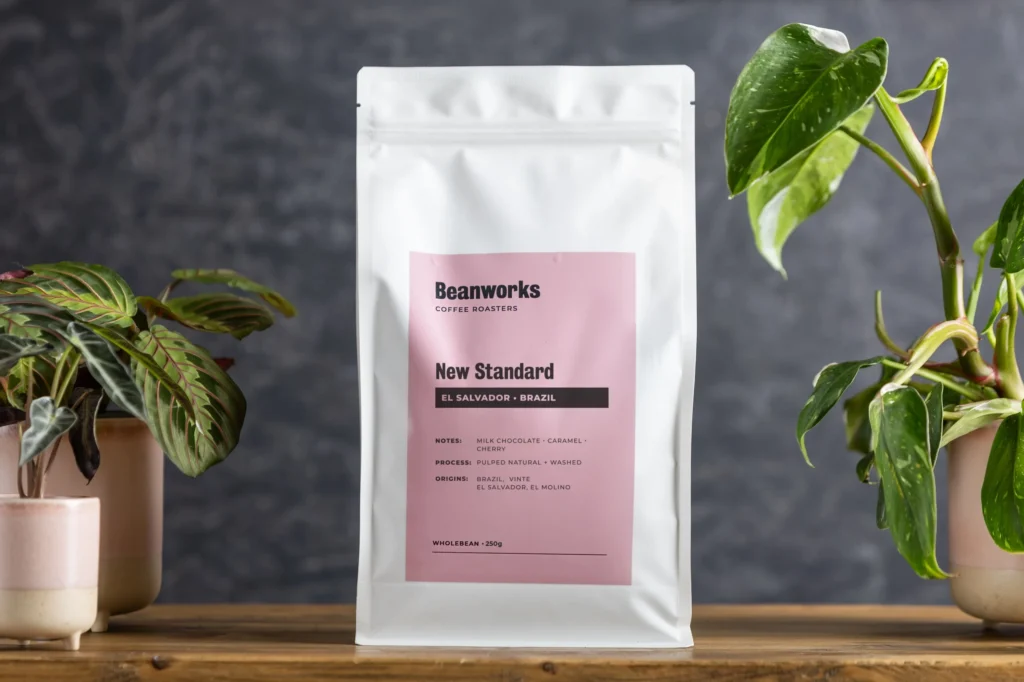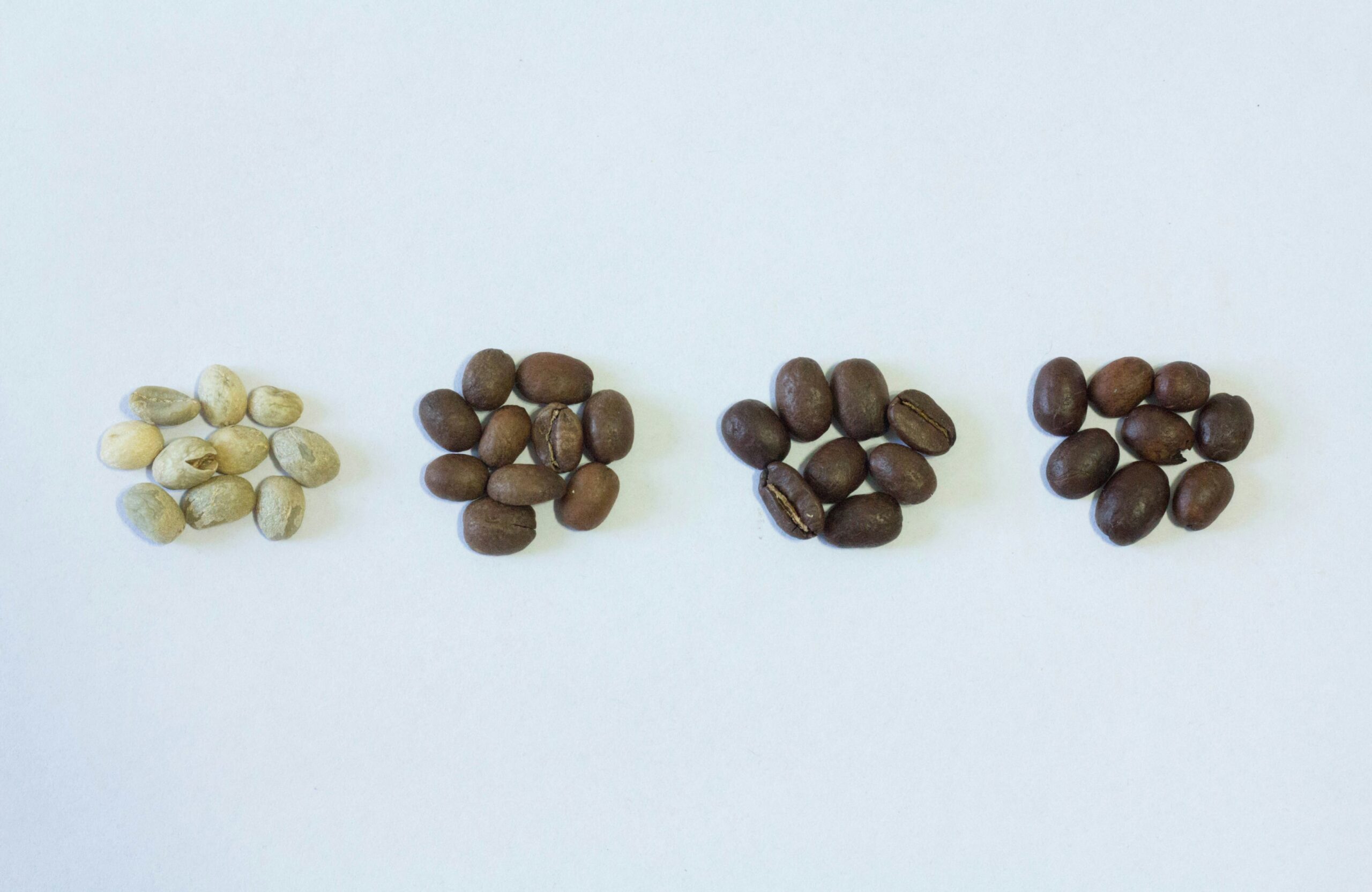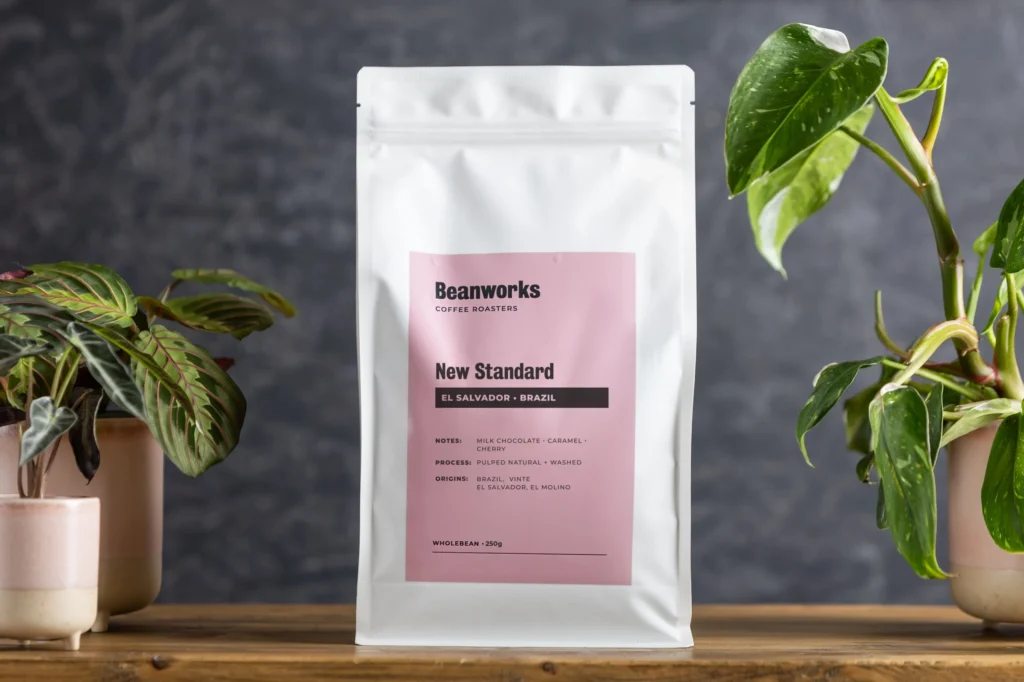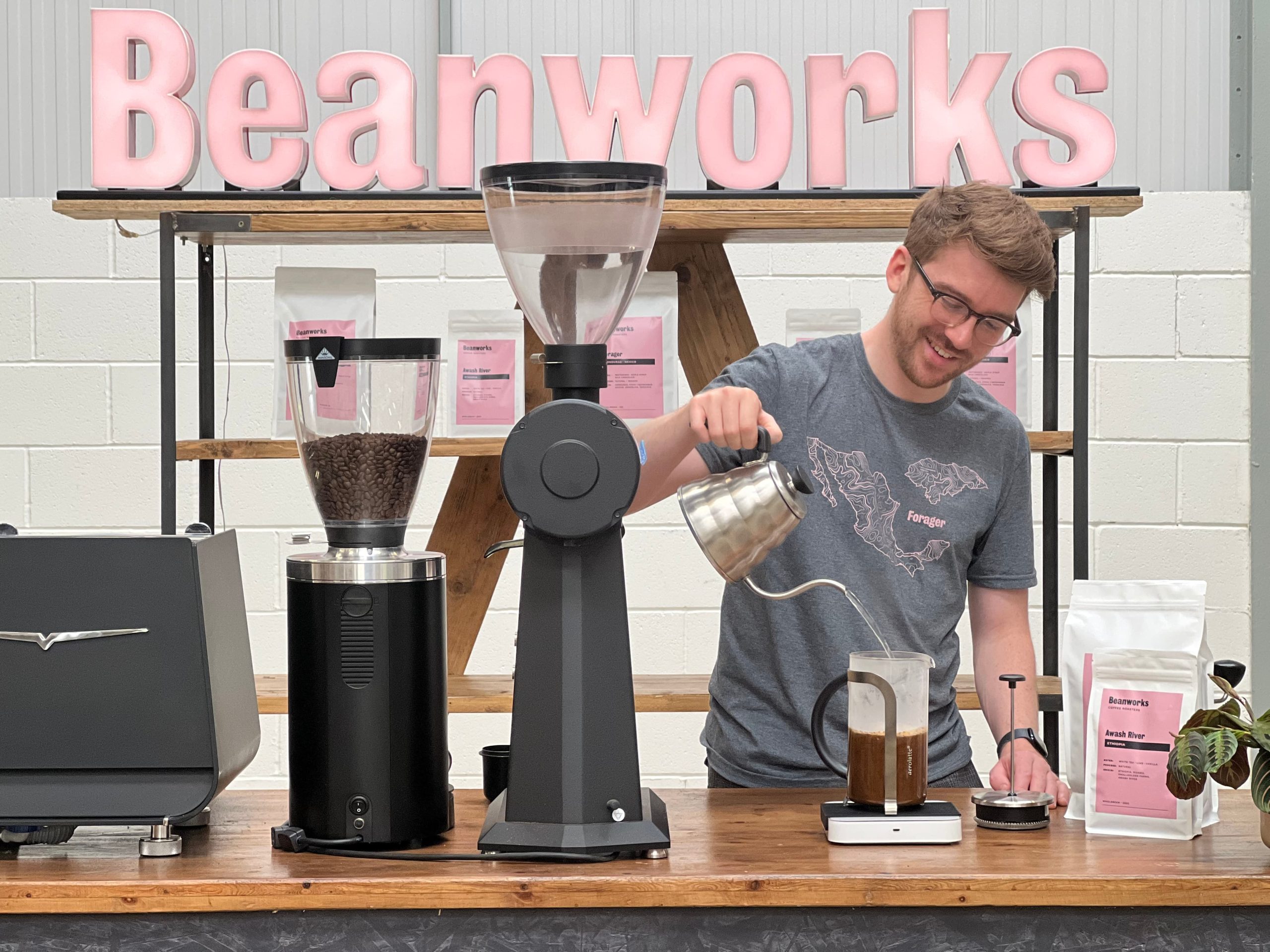Great coffee starts with the right beans – but how do you know what to pick?
At Beanworks, we’ve been sourcing world class green coffee beans since 2005 – finding coffees that surprise, delight, and bring something genuinely special to the cup. In this guide, we’re sharing everything we’ve learned as artisan roasters to help you understand how to choose coffee beans like a professional.
Ready to dive in? Let’s go.
How to Choose the Right Coffee Beans
What goes into picking coffee beans as an artisan? A whole lot of curiosity, experience, and a serious love for flavour. At Beanworks, Felix – our Head of Coffee – sources beans from all around the world, from co-operatives he’s worked with during his time in Mexico to smallholder farms tucked into the hills of Ethiopia.
But what if you’re not a roaster? Whether you’re brewing at home or running a coffee shop, we’ve got you covered. Think of this as your insight into how artisans like Felix approach coffee – so you can feel confident choosing beans that’ll make your cup stand out.
What is Speciality Coffee?
If you’re choosing coffee beans for your café, restaurant, or even your home setup, understanding speciality coffee is the best place to start.
Unlike commodity coffee beans – which are traded in bulk with little focus on flavour – speciality coffee is all about quality and intention, from farm to cup. It’s sourced more thoughtfully, roasted more carefully, and designed to give you more unique flavours that’ll be remembered.

To be considered speciality, a coffee used to have to achieve a specific score in an assessment created by the Speciality Coffee Association (SCA). But the SCA now recognises that what makes a coffee valuable isn’t always a number – it might be the aroma that lights up your senses or the sweetness that keeps you going back for another sip.
The SCA now defines speciality coffee as “a coffee or coffee experience that is recognised for its distinctive attributes, resulting in a higher value within the marketplace.”
What Makes a Coffee High Quality?
High quality coffee beans are the result of small, important details coming together just right – from how the cherries are picked, to how carefully they’re handled, to how evenly they’re roasted.
Bottom line? If you want higher quality coffee beans, look for signs of care, precision, and intentionality at every stage. That’s the stuff that makes a brew go from decent to memorable.
Choosing Between Robusta or Arabica Coffee Beans
One of the first decisions an artisan makes when picking coffee beans is choosing between Arabica and Robusta – the two most popular varieties of the coffee plant.
Most speciality coffee uses Arabica beans. So nine times out of ten, if you’re buying high-quality coffee, you’re already in Arabica territory.
Why? Arabica coffee beans tend to have a wider flavour range – think floral, fruity, sweet, or even tea-like depending on the origin. That makes them perfect for anyone who wants to really taste the unique character of a coffee.
Robusta beans are also used, however. They’re higher in caffeine and add depth and strength to a cup, with bold, earthy flavours that work well in espresso blends.
Remember, whilst Arabica and Robusta dominate the coffee world, there’s a whole world of other coffee beans out there. Check out our guide on the types of coffee beans to discover the unique flavour profiles of the world’s coffee varietals.
Single Origin or Blend?
When choosing coffee beans, this question comes up a lot. Should you go for a single origin or a blend?
Single origin coffee is all about showcasing the unique character of one place – sometimes even one specific farm. Go for single origin if you want:
• A more traceable, transparent coffee story
• To experience distinct flavour notes
• A seasonal rotation of exciting coffees
Blends, on the other hand, are all about balance and consistency. Choose a blend if you want:
• A balanced flavour
• Great performance in milky drinks like lattes or flat whites
• A go-to brew that tastes the same each time
Coffee Roast Level
Light roast, medium roast, or dark roasted beans… the same coffee can taste totally different depending on how long it’s roasted. When you’re looking at different coffee beans, make sure to check the roasts for an indication of the flavours you’ll be getting.
• Light roast brings out brightness, fruitiness, and more acidity. It’s great for showing off those single origin flavours.
• Medium roast is super balanced – smooth, slightly sweet, and versatile enough for just about any brew method.
• Darker roasted beans tend to have deeper, more intense flavours – think chocolatey and bold, often with lower acidity.

Roasting Date and Freshness
Freshly roasted coffee brings way more flavour to your cup – the oils, aromas, and balance are all at their peak. Look for a coffee roasted to order like we supply at Beanworks, sent out at its best so your cup tastes the way it should: bold, exciting, and full of character.
Whole beans will always keep better than pre-ground coffee, so if you’ve got a grinder, go for whole beans and grind just before brewing.
Caffeine Level
Not all coffee hits the same. Robusta beans have nearly twice the caffeine of Arabica, which is why they’re often used in blends for espresso or coffee drinkers who love a strong, bold cup.
Coffee can also be processed to be without caffeine – so if you’re looking to cut back or supply caffeine-free options to customers without compromising on flavour, seek out a good decaf. They’ve come a long way in recent years, and when roasted with care, they’re genuinely delicious.

Coffee Processing Method
The way coffee cherries are handled after they’re picked is what we call the processing method, and there are a few key styles to look out for:
• Washed coffees are super clean and crisp. They’ve been pulped and washed to remove the fruit, letting you really taste the bean itself. Great if you love clarity, citrusy notes, and balance.
• Natural processed coffees are dried with the fruit still on. They tend to be bolder, funkier, and fruitier – think jammy sweetness and tropical vibes.
• There are also honey processed or semi-washed coffees, which sit right in the middle, as some of the mucilage is left on.
Brewing Method
The way you brew coffee plays a big part in choosing the right beans – and getting the best out of them.
If you’re into filter coffee (whether drip or pour over coffee), light and medium roasts are usually where it’s at. These methods highlight the delicate, complex notes in the coffee – like florals, citrus, or stone fruit – and give you a super clean cup.
But if you’re all about espresso? Go for darker roasted beans. They bring the punch – more body, less acidity, and all that boldness that stands up beautifully in milky drinks like flat whites and lattes.
If you’ve got an espresso machine or bean to cup coffee machine, it’s worth remembering that your grind size and roast level should match the machine’s settings to achieve the best results.

Coffee Flavour Notes
This is the fun bit. Flavour notes in coffee can vary massively depending on the bean’s origin, altitude, and roast.
Some coffees give you smooth caramel notes or mellow brown sugar sweetness. Others hit with bold dark chocolate, juicy stone fruit, or floral, tea-like vibes. Higher altitudes usually bring more complexity and acidity, while lower altitudes can give you a deeper, earthier flavour.
Our advice? Try everything. You might find yourself obsessed with that chocolate-orange note from Peru or hooked on a floral Ethiopian. Either way, tasting around is the best way to discover what works for you.
Coffee Beans to Avoid
If you’re on the hunt for the best coffee beans, there are a few red flags to keep an eye out for:
1. Mass-produced mystery beans. You know the ones – supermarket shelves stacked with generic packaging and vague flavour promises. These coffees are usually mass-produced with quantity over quality in mind.
2. No details about location. Great coffee starts at the source. If the bag doesn’t tell you where the beans are from – no region, no country, not even a mention of farm or altitude – that’s a red flag. For coffee lovers who care about flavour, origin details matter. They help you trace what you’re tasting back to where it grew.
3. No roast date. Always check for a roast date, not just a “best before” one. Without it, you’ve got no idea how fresh the beans are – and stale coffee won’t give you the boldness or nuance you’re after.
What About Instant Coffee?
Instant coffee is quick and convenient. But if you’re chasing particular coffee flavours – like juicy fruit, smooth caramel, or bright acidity – instant’s just not going to hit the same. That’s where roasted-to-order beans shine. You get all the nuance, all the depth, and way more control over how you brew.
What is the Best Way to Buy Coffee Beans?
The best way to buy coffee beans? From speciality coffee roasters.
Here’s why: when you buy from a supermarket, chances are those beans were roasted weeks (or even months) ago and packed for shelf life.
Speciality roasters focus on sourcing high-quality beans, roasted to order with care and curiosity. Whether you’re into something fruity and vibrant or deep and chocolatey, we’ve got a coffee that’ll speak to your taste buds.
